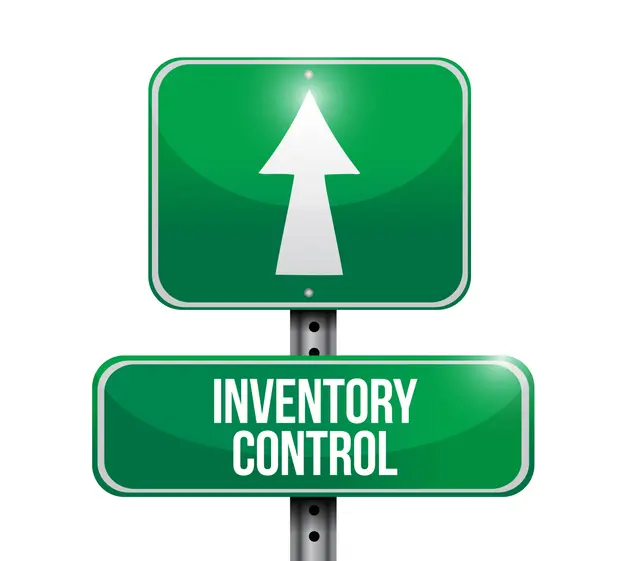If your business deals with physical goods, then learning everything you can about inventory valuation is of critical importance. It can affect your cash flow and many other aspects of your business, even its overall financial health. In this article, we will guide you through it all, including what inventory evaluation is, why it is important, what the main methods are of inventory valuation, what the challenges and considerations are, and how to choose the valuation method best suited to your business. Lastly, we will delve into how inventory management software can make inventory valuation and management so much easier for you.
What is Inventory Valuation?
All goods that businesses stock, whether they are put up for sale or used within the production process, are known as inventory. At the end of an accounting period, a monetary value is assigned to the inventory that a business has in stock. This is called inventory valuation. This valuation will directly affect the balance sheet and income statement of the business. It will ascertain the cost of goods sold (COGS), which is the cost of all inventory sold during the accounting period. The inventory valuation will also ascertain the value of any remaining unsold inventory, which will show as an asset on the balance sheet, also known as closing inventory.
Why is Inventory Valuation Important?
Inventory valuation may seem like a straightforward topic, but it plays a significant role in every business. Firstly, its importance is held in the fact that the valuation of inventory is used to calculate the COGS. This is crucial because COGS is used to determine the gross profit, which is the key indicator of the efficiency and profitability of a business. Secondly, it is important to know the inventory valuation because it affects the presentation of current assets on the balance sheet. One needs to know the current assets in order to calculate the working capital, which is the measure of the liquidity and solvency of the business. Furthermore, it is necessary for calculating the financial ratios of a business. The inventory valuation helps you determine your inventory turnover ratio. This ratio demonstrates how efficient a business is in managing its inventory. Another financial ratio would be the debt-to-equity ratio, which conveys how much a business is relying on debt to fund its operations. This ratio is vital as it influences the perception held by potential lenders, investors, and stakeholders. Finally, whichever method of inventory valuation a business chooses will impact how much tax it is liable for. Keep on reading to familiarize yourself with the extent of this impact.
Inventory Valuation Methods
Let’s discuss the four main methods of inventory valuation. Keep in mind that each method has advantages and disadvantages, which differ depending on the characteristics and nature of each business and its respective inventory, so consider this when valuing inventory as this will also affect inventory valuation accounting.
First In, First Out (FIFO)
The FIFO method works on the assumption that the oldest inventory purchased or produced gets sold before the newest inventory. Quite literally, the first piece of inventory arriving, should be the first to be sold. This method reflects the actual flow of inventory in the majority of businesses, in particular businesses that deal with fast-moving or perishable goods. With the FIFO method, COGS is calculated using the cost of the old inventory, which is generally lower than the cost of the newer inventory. However, the inventory value is calculated on the cost of the newer inventory, which is most often higher than that of the old inventory. The lower COGS means the gross profit is higher, while the higher inventory value means the working capital is higher than it would be using other methods. Due to the lower COGS, the taxable income is higher, resulting in higher taxes. Financial ratios, like the inventory turnover ratio, also tend to be higher due to the value of the equity and inventory being higher.
Last In, First Out (LIFO)
The LIFO method gives a very different picture to FIFO as it works on the assumption that the newer inventory is sold before the older inventory. This results in a more market-related valuation of the inventory, but an inaccurate reflection of the actual flow of inventory in the average business. In complete contrast to the FIFO method, the LIFO method calculates COGS using the cost of the new inventory, which is generally higher than the cost of the old inventory, and the inventory value is calculated on the cost of the old inventory, which is most often lower than the new inventory. Higher COGS results in a lower gross profit, and a lower inventory value means a lower working capital. Due to the higher COGS, the taxable income is lower, resulting in lower taxes. Financial ratios, such as the debt-to-equity ratio, are lower with LIFO because the value of the equity and inventory is lower.
Weighted Average Cost (WAC)
The WAC method takes the total cost of the inventory and divides it by the number of inventory units. This calculates the average cost of each unit regardless of when it was purchased or how much it cost at the time of purchase. This simple method works well when the inventory is made up of similar items. The COGS is based on the average cost of the old and new inventory, which results in a more moderate COGS and moderate gross profit. The inventory value is also based on the average which means a moderate value and a moderate working capital. This results in a moderate income, moderate taxes, and a moderate financial ratio due to the moderate value of the inventory and equity.
Specific Identification Method
The specific identification method is exactly what it says, specific. It assigns the actual cost of each individual inventory item to that specific item. This method works well on unique inventory items such as jewelry or artwork. With this method, the COGS is based on the actual cost of the inventory that was sold. This leaves room for manipulation as the business can pick and choose its highest or lowest costing units to suit whichever outcome it wants to achieve. This also leaves the gross profit open to manipulation. Depending on the desired outcome, the highest or lowest-costing units can be selected to manipulate the value of the inventory when calculating the actual cost of the inventory. This allows the business to manipulate the working capital too. This method results in extremely variable taxes since the taxable income is so easily manipulated by the cost of the units you choose. The cost of the units you choose also results in variable financial ratios, as the inventory turnover ratio and debt-to-equity ratio are affected by the value of the inventory. Remember, the closing inventory is equivalent to the opening inventory of the next fiscal period.
Challenges and Considerations in Inventory Valuation
Inventory valuation is not as simple as selecting a method and applying it. There are several common challenges that can impact inventory valuation. It is therefore necessary for us to identify these problems and pinpoint strategies to mitigate them moving forward. Inventory shrinkage is the first challenge. This is when there is a loss of inventory which results in reduced inventory values and profitability. Inventory shrinkage, or inventory write-down, can be attributed to incidents such as theft, spoilage, damage, or monitoring errors. The best strategy to minimize the influence of inventory shrinkage involves utilizing effective tracking methods, like inventory controlling, quality control, and improving security measures. The second challenge comes in the form of inventory obsolescence. This is when inventory loses its value due to innovations in technology or changes in customer preferences and market conditions. When inventory becomes obsolete, a business is left with outdated products that can only be sold at a reduced price. Thankfully, one can avoid this issue by regularly conducting market research and updating their product mix. The last challenge that arises concerns changes in inventory valuation methods. Method changes will result in different taxable incomes. Also, if a business switches methods from one period to another, the comparability and consistency of its financial statements are affected. As these are indicators of performance, it is important to disclose and justify any changes within the financial statement.
Aside from these challenges, one must also consider three accounting principles when selecting a valuation method. Firstly, the lower cost or market rule dictates that a business must value its inventory at either its cost or market value (aka, the current replacement cost), according to which one has the lower value. This is done for two reasons: to recognize inventory shrinkage in the income statement and to avoid overstating one’s inventory on the balance sheets. Secondly, the matching principle is used to ensure that the true profitability of a business is shown in the income statement. The principle states that expenses must match the revenue generated within the same period. To apply this principle, a business should select a valuation method that allows COGS to accurately reflect the revenue generated by inventory, as well as the current market conditions. Lastly, the consistency principle is applied to prevent frequent and arbitrary changes in inventory valuation methods. This principle states that accounting methods must be consistent over time so that financial statements are reliable and comparable.
Choosing the Appropriate Valuation Method
When selecting an inventory valuation method for your business there are several factors and objectives that must be considered, as they can help you to make your choice. With so much responsibility riding on the accuracy of inventory valuation, it is imperative that you select the most appropriate valuation method for your company’s wants, needs, and goals. The first step is to analyze the objectives of the business, which are the goals you put in place to help your business achieve its vision. Because different valuation methods have different impacts on the financial performance of a business, your business objectives can be used to guide your decision. For example, if your goal is to attract investors then you should select a method that results in higher equity and financial ratios, such as the FIFO method. In contrast, LIFO will lead to lower tax liability which is useful if your objective is to minimize the taxes incurred by your business.
The next step is to examine the tax rules and regulations put in place by the government wherever you are conducting business. This will inform you of what tax requirements you must comply with. For example, countries like the UK forbid the use of LIFO for tax purposes, meaning you will have to choose between FIFO and WAC. However, in countries like the USA, LIFO can be used for tax purposes but not for financial statements. Thus, you could utilize it for taxes, but you would have to reconcile any discrepancies that occur as a result of needing to use a different method in your financial statement. The last step is to consider the impact your decision will have on your inventory forecasting. Inventory forecasting is important for planning and managing inventory, as it is used to estimate the future demand and supply of inventory. Your choice of inventory valuation can change how accurate your forecasting is. If the prices are increasing then FIFO, which provides more realistic inventory values, will improve inventory forecasting accuracy. In contrast, using LIFO in an environment where inventory prices are unstable will distort the forecasting, because LIFO provides unrealistic inventory values. Now that you are aware of what to consider in order to make your decision, we can discuss how to manage your decision thereafter.
Using Software in Inventory Valuation Management
Once you have chosen your inventory valuation method, you will engage in the process of applying and maintaining it. This is called inventory valuation management. It includes adjusting inventory accounts, as well as tracking, recording, and reporting the movement of inventory and transactions. In our modern world, it should come as no surprise that the technology industry has created inventory management software, which can be used to aid a business with managing and controlling its inventory, allowing for a more accurate and data-driven inventory valuation system. There are three distinct features that this kind of software offers.
Inventory tracking is a feature that a business can use to monitor movements in its inventory. Examples of movements include sales, returns, transfers, and purchases. This feature can accurately record inventory quantities, statuses, and locations, thereby reducing potential errors and discrepancies. The inventory costing feature uses a business’ chosen valuation method to calculate and assign costs to its inventory. It saves the business a lot of time by calculating the COGS, gross profit, and inventory value without much need for human labor. The lack of human error makes this feature particularly useful for helping a business comply with accounting and tax standards. Another feature offered by this software would be inventory reporting. This allows a business to generate inventory reports, like the inventory turnover report, inventory aging report, and inventory valuation report. With these reports, a business can evaluate the inventory performance and analyze where they can make improvements. It is important to note, that while inventory management software is incredibly beneficial, it is not a substitute for the intuition and expertise of people. This is because it still requires human selection of valuation methods and verification of results. When choosing an inventory management software, you should also consider AI-driven software, capable of optimizing your inventory. Take a look at Intuendi’s inventory optimization software.
Conclusion
In this article, you have been made aware of how the process of inventory valuation can affect your business, both financially and operationally. For this reason, it is crucial to make sound decisions when selecting a valuation method that considers your business objectives, tax requirements, and forecasting tools. We explained that it is a process that faces several challenges (such as shrinkage and obsolescence) and that one must strictly adhere to the three accounting principles that regulate it. You have also learned that it does not simply end by selecting a method, but requires continual monitoring and maintenance. We then explained the features of inventory valuation management software that can assist you with this maintenance. We hope that you have found this article to be informative and that you will be able to take your new insights and apply them to your own business in the future.






